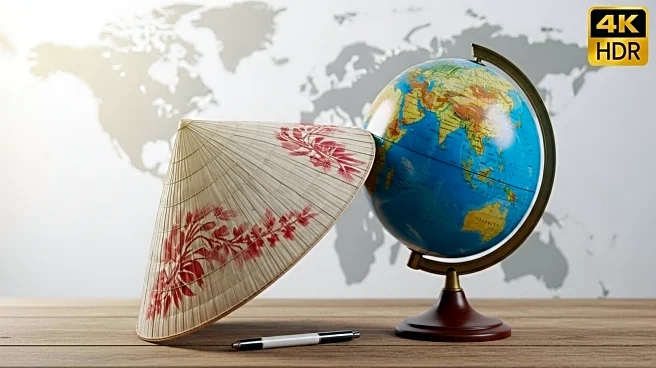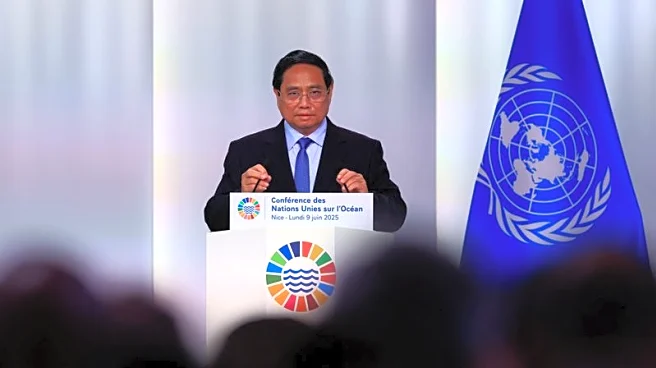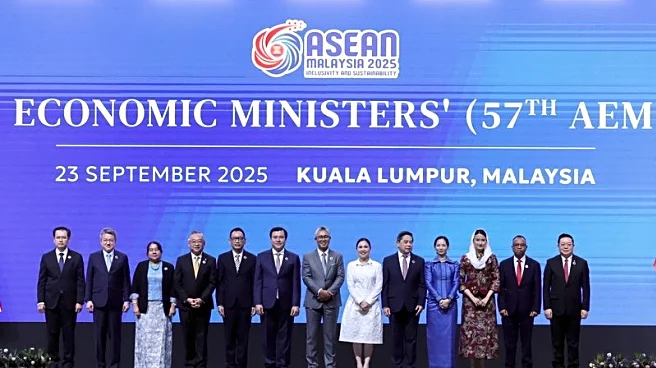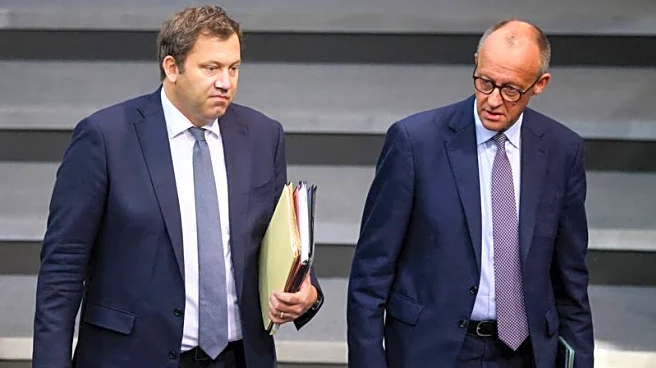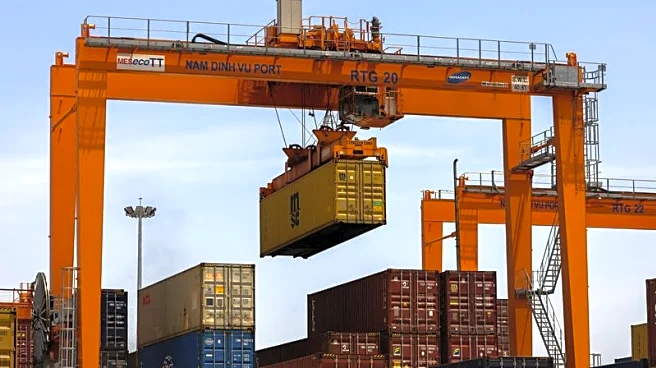What is the story about?
What's Happening?
Vietnam's Prime Minister Pham Minh Chinh announced plans to pursue new trade agreements to counteract the effects of U.S. tariffs on Vietnamese goods. The United Nations Development Programme estimates that these tariffs could reduce Vietnam's exports to the U.S. by up to 20%, making Vietnam the hardest-hit country in Southeast Asia. Despite these challenges, Vietnam's exports have grown by 15.8% year-on-year, reaching $325.3 billion as of mid-September. To offset the impact of U.S. duties, Vietnam aims to sign free trade agreements with Mercosur and Gulf Cooperation Council countries by the end of the year. The Trump administration imposed a 20% tariff on most Vietnamese goods, and a 40% tariff on goods transshipped through Vietnam.
Why It's Important?
The imposition of U.S. tariffs on Vietnamese goods poses significant challenges for Vietnam's economy, which heavily relies on exports. The tariffs could lead to a substantial decrease in trade revenue, affecting economic growth and employment. By seeking new trade agreements, Vietnam aims to diversify its trade partnerships and reduce dependency on the U.S. market. This strategy could help stabilize Vietnam's economy and maintain its export growth. The situation also highlights the broader impact of U.S. trade policies on Southeast Asian economies, which may need to adapt to changing trade dynamics.
What's Next?
Vietnam plans to continue trade negotiations with the United States while pursuing new trade agreements with other regions. The success of these negotiations could determine Vietnam's ability to mitigate the impact of U.S. tariffs. Additionally, Vietnam's efforts to crack down on imported goods that violate international copyright or have questionable origins may influence future trade relations with the U.S. and other countries.
AI Generated Content
Do you find this article useful?





